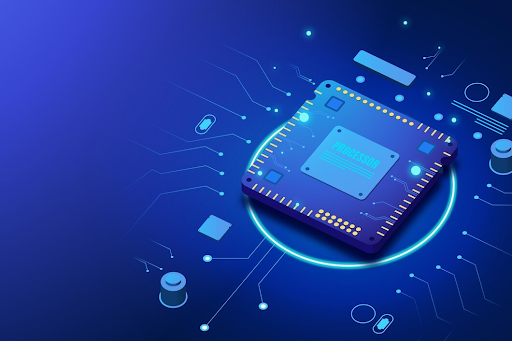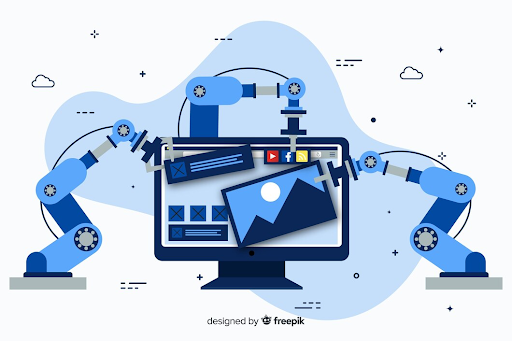Mohammad Alothman: AI Hardware and the Future Beyond GPUs
- Mohammad Alothman

- Mar 14
- 5 min read
As a technology strategist and AI researcher myself, I, Mohammad Alothman, have seen over the years how rapidly the pace of artificial intelligence has been.
Yes, the AI program always gets the attention and well-merits all that credit but it's the background gears which actually make real progress materialize.

The AI hardware does not receive as much attention, but it is the backbone that allowed everything to progress at a normal rate and provided a chance of anything.
Indeed, the desire for additional advancements when it comes to performance, either speed or maximum efficiency has surpassed the common GPUs (Graphic Processing Units), pushing us towards looking for advanced hardware that is entirely focused on tasks of AI processing.
In this article, I'll explain why GPUs are no longer enough and what's arriving with AI hardware.
The Rise and Limits of GPUs in AI Hardware
GPUs have been a lifeline to deep learning and AI training because they possess the ability of processing incredibly large volumes of data with tremendous speed in parallel to CPUs that it is simply not possible to attempt to keep pace.
They are speedster workers which AI models rely on to learn from. They've been pushing the advancements along all the while in technologies like computer vision, NLP (Natural Language Processing), and neural nets.
Yes, well, AI has completely disrupted the game on a big time scale and we've learned some very critical boundaries when it comes to employing GPUs.
Energy Consumption: GPUs are power hungry devices, so it makes big-time AI operations expensive and not viable.
Latency Problems: Current large AI systems have rates of data transmission so blazing-fast that it impedes decision-making applications in real-time.
Scalability Problems: Training new large AI models on high-end GPUs is expensive and can create performance bottlenecks.
These are the reasons why the industry has been searching for alternative AI hardware solutions, and AI Tech Solutions is proceeding with next-generation technologies to bypass these problems.

The Next Generation of AI Hardware
To transcend GPU constraints, the technology is shifting towards proprietary AI hardware, tailor-made for AI workloads. These are the leading technologies that will shape the future:
1. TPUs (Tensor Processing Units): The Force Behind Deep Learning
Google designed these TPU chips specifically for performance and efficiency at machine learning tasks. They're home runs when it comes to truly huge number crunching, and they're much better than GPUs when it comes to all forms of deep learning work.
TPU benefits:
More Efficiency: Power efficient, and delivering super performance on machine learning training and inference.
Lower Cost: Reduces overall operating costs for businesses in the AI sector.
Optimized for TensorFlow: Seamless integration with Google's TensorFlow framework.
2. Neuromorphic Computing: Mimicking the Human Brain
Neuromorphic chips represent a paradigm shift in AI hardware that computes information the way the brain does. Spiking neural networks (SNNs), used by these chips, compute information asynchronously, with less power consumption and better real-time learning.
Why Neuromorphic Computing Matters:
Ultra-Low Power Consumption: Ideal for edge AI applications like IoT and robotics.
Adaptive Learning: Learns and adapts over time without retraining.
Brain-Inspired Efficiency: Designed for pattern recognition and cognitive computing.
3. Edge AI Hardware: AI at the Source
Centralized data centers are AI model-dependent with Cloud-based models, but Edge AI brings computation closer to the edge, to the device, reducing latency and enhancing security.
Examples of Edge AI Hardware:
Nvidia Jetson: Small but powerful AI hardware solution for robotics and autonomous use.
Intel Movidius: Consider researching a device that can learn and see as if through a human drone or camera.
Qualcomm AI Engine: Enables mobile AI performance without compromising efficiency.
That's a vision processing unit or VPU - an extremely smart computer chip loaded with the latest superb technology called AI incorporated within so it can shoot terrific photos and video and search the skies.
The Future of AI Hardware: What's Next?
As the future of AI unspools, we are at the threshold of seeing innovation in quantum AI, photonic computing, and bio-inspired AI chips. These are some of the trends that will emerge in the future:
Quantum AI: Utilizing quantum computers to solve challenging AI issues quicker than traditional hardware.
Photonic AI Chips: Processing data with light rather than electricity dramatically reduces power requirements.
3D Stacked AI Chips: Boosting processing density to speed up AI performance without increasing footprint.
AI-Optimized Memory Architectures: Making AI workflow fast by turboing data access and optimizing storage.

Conclusion
GPUs have played the leading role in AI success, but as demand increases, hardware for AI needs to match.
I, Mohammad Alothman, believe that tailored chips such as TPUs, neuromorphic computing, and Edge AI processors are the future of artificial intelligence.
Messing around with innovation are firms such as AI Tech Solutions that provide us with a lot to look forward to gigantic leaps forward in that very promising field of AI hardware.
About the Author: Mohammad Alothman
Mohammad Alothman is an AI strategy expert, researcher, and technology evangelist for AI hardware and disruptive computing technologies.
Mohammad Alothman has very profound technology expertise employing artificial intelligence and has done some great things that make AI solutions much more powerful, do really better and always scale easily and quickly too.
Being very much interested in the future of AI, Mohammad Alothman actively researches the newest hardware solutions that shape the future of artificial intelligence.
FAQs for AI Hardware
1. How does AI hardware influence the efficiency of machine learning models?
AI hardware directly influences processing speed, power consumption, and overall machine learning model efficiency. Dedicated chips like TPUs and neuromorphic processors allow AI models to process more quickly with less power consumption.
2. What are the main differences between TPUs, GPUs, and neuromorphic chips?
GPUs: Designed to crunch along with computers at the same time, proficient in deep learning but consumes power very wastefully.
TPUs: Designed to erase AI material quicker and better this new one annihilates GPU servers.
Neuromorphic Chips: Mimic the neural networks of the human brain for highly efficient, low-power AI computation.
3. Why is energy efficiency so important in AI hardware design?
With larger and more computationally complex AI models, traditional hardware devices like GPUs consume too much power. New hardware technology for AI is designed to reduce power consumption without compromising high performance.
4. Will GPUs be replaced by dedicated AI chips?
No. While GPUs will continue to be used for AI development, dedicated AI chips will be used for specialized workloads requiring higher efficiency and lower power consumption.
5. How does AI hardware influence edge computing?
Progress in AI hardware allows one to run AI models natively within edge devices, reducing the need for cloud computing. This helps reduce latency and ensure high privacy for smart camera and IoT device applications very well.




Comments